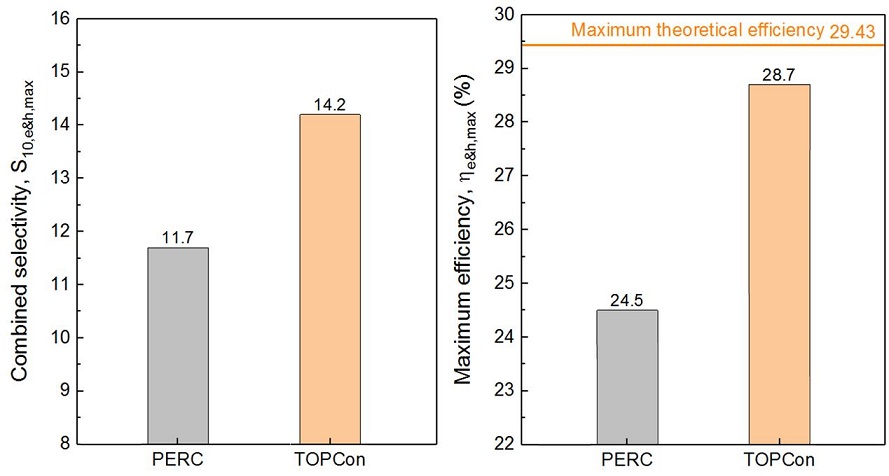The theoretical limit efficiency of TOPCon solar panel cells is as high as 28.7%, which is the technology closest to the theoretical limit efficiency of crystalline silicon solar module cells (29.43%), much higher than PERC (24.5%), and has great potential for research and development.

According to the main power loss directions, the main directions of efficiency improvement are:
1) To reduce the recombination loss and carrier transmission loss in the passivation area of the emitter, an effective method is to use a high-resistance emitter to reduce the recombination loss, and use a dense grid (smaller grid line pitch) to reduce the recombination loss. Lateral transmission loss of carriers;
2) Reduce the non-ideal optical loss on the back side, such as using thinner n+ poly to reduce the absorption of free carriers, improve back reflection and reduce transmission loss by improving the back surface morphology and the combination of film layers;
3) Reduce optical occlusion and reflection loss, such as the development of metallization technology with narrower line width and larger aspect ratio, and reduce reflection loss by improving the pyramid shape of the front surface and setting up a laminated film.
As the most promising battery technology to replace PERC as the next-generation mainstream battery technology, TOPCon’s market share has gradually increased in the past two years, and has accounted for more than 50% of a variety of N-type solar modules technologies. It is the goal of many photovoltaic manufacturers to upgrade their production lines. As a veteran and vanguard of N-type TOPCon solar panels technology, he will continue to expand and deepen the N-type bifacial solar module technology layout, and continue to put new laboratory technologies into mass production, guiding new directions for global photovoltaic technology.